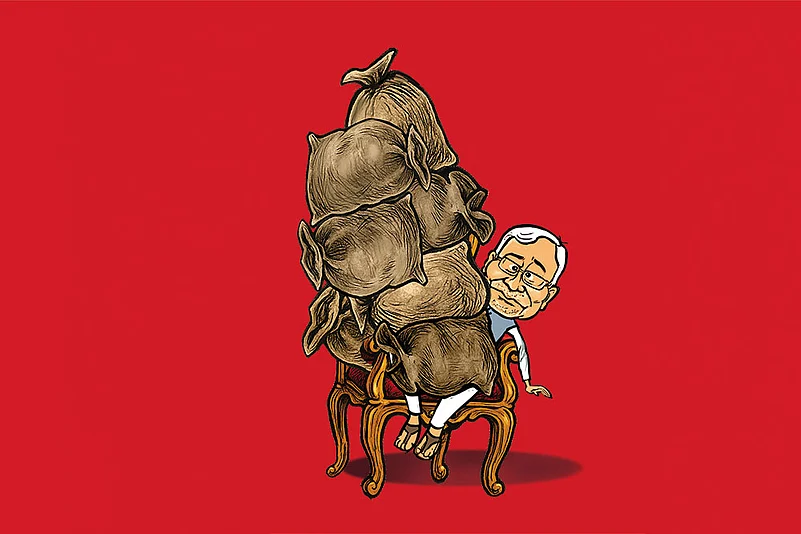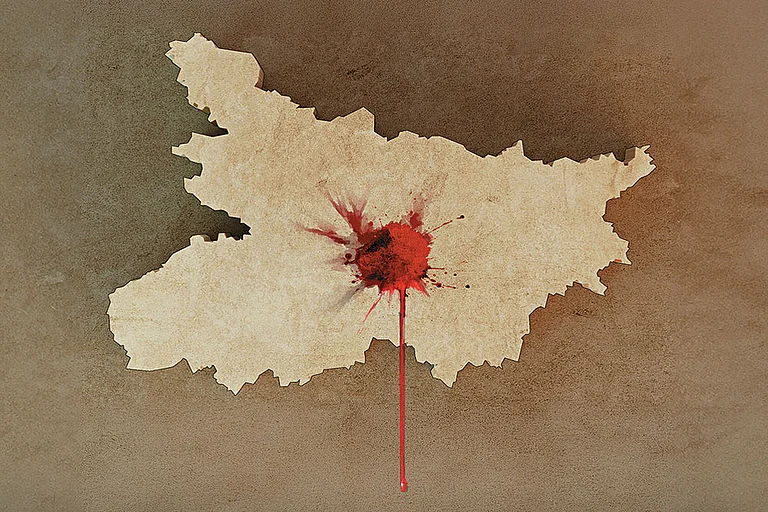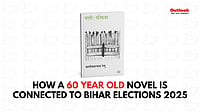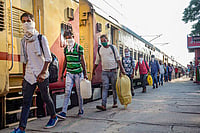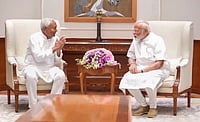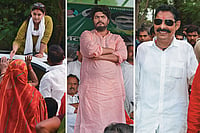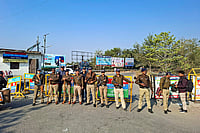
Bihar faces severe and overlapping crises — extremely low per capita income, poor literacy, weak health indicators and high crime rates — placing it among the most deprived regions globally.
Despite structural distress, unemployment and migration, election discourse focused on abstract promises and distant futures rather than the present suffering of citizens.
Stories like that of Soni Kumari and her siblings, who lost their parents during the pandemic and were denied dignity in death, echo the wider humanitarian neglect.
Bihar’s per capita income is Rs 70,000. It is a third of the national average, and nearly six times less than what a person in Telangana earns in a year. More than a third of its people, 33.8 per cent, live in multidimensional poverty, the highest in the country. If it were a country, Bihar would be the 12th poorest in the world. It also has the most illiterate people in India. Its literacy rate of 74.3 per cent is way below the national rate of 81 per cent. According to the latest National Crime Records Bureau figures, Bihar has the second-highest number of murder cases, after Uttar Pradesh. Bihar ranks last among all the states in the Human Development Index. A 2020 study found that 50 per cent of all households in Bihar had at least one migrant member. It has one of the highest unemployment rates. Bihar was ranked 18th out of 19 large states according to NITI Aayog’s State Health Index 2019-20. It has the highest share of underweight children.
10 Times CM
1st March 2000
2nd November 2005
3rd November 2010
4th February 2015
5th November 2015
6th July 2017
7th November 2020
8th August 2022
9th January 2024
10th November 2025
Some stories must be retold as an act of resistance. They must be remembered as sacred, as testimony to the suffering of the people who have learnt to give up, to not expect, to wait until eternity, to not complain and to let go. Of hope, expectations, dignity. There is a lot that’s wrong in Bihar. Yet, we only spoke of the past and the distant future in the elections. The rhetoric was surreal, like a Magritte painting where the boundaries between reality and representation merged. But Bihar isn’t a painting. It is a collage of many things. It is a patchwork of many stories.
Like the one from 2021 in Bihar, where a young 19-year-old girl had to bury her parents herself after they both passed away during the second wave of the pandemic. A new government had been sworn in months before in Bihar and as always, there were many promises. But Bihar knows betrayals more than it knows development.
Soni Kumari was 19 and her two siblings, Nitish and Chandani, were 15 and 13 years of age, respectively, at the time. They were poor and had to sell their land and their goat to get their father, Birendra Mehta and their mother Priyanka, treated at a private nursing home in Purnia. Their parents didn’t survive and the orphans weren’t allowed to cremate the bodies by the villagers.
The photo was first published in a local newspaper. A tragic photo that showed a young girl in a PPE kit digging the earth to bury her parents.
Nobody from the village came forward to help the children. Their grandmother died after five months.
Meraj Khan, a reporter with Main Media in Araria, had told me the siblings buried their parents next to each other.
The Bihar government handed the bereaved girl a cheque for Rs 4 lakh as compensation.
On May 10 that year, around 48 bodies of suspected Covid patients washed up on the banks of the Ganga in Buxar.
The second wave of the pandemic wreaked havoc across rural Bihar. Reports of ventilators lying in hospitals without any operators filled the newspapers.
While we remember the horrors of Bihar, a new government is all set to take oath under Nitish Kumar once again.
I, as a Bihari, would like to say that for decades we have only been waiting for change. We know hope is not enough. We, as Biharis, are okay with everything that comes our way. We make our compromises, we adjust, we make amends.
For those who grew up in the 1990s, Bihar was a lawless place. Lalu Prasad Yadav had taken over as the chief minister of Bihar and what followed was sheer chaos. Bihar witnessed a total collapse of law and order. It was the beginning of the end of many things. Perhaps he was a political necessity at the time. But terror reigned in Bihar. Lalu and his wife Rabri Devi’s regime also saw a lot of caste wars. When Nitish Kumar took over in 2005, some relief set in. The law and order situation became better, but other issues remained. They still remain.
For two decades, we have seen Nitish navigating between the Rashtriya Janata Dal and the Bharatiya Janata Party (BJP) to retain the CM’s chair, thereby dissolving any ideology that the Janata Dal (United) might have had.
For decades, the BJP has waited for its turn to run the show in Bihar and 2025 is the year when they have emerged the strongest in the state.
Where do we go from here?
For Nitish, it is a question of legacy now. For Lalu, who is grappling with the electoral loss, the uncertain future of his son Tejashwi Yadav and a family feud, it is again a question of legacy.
In any case, the 2025 election marks the end of an era.
For the poor, nothing changes.
For us, we keep remembering the stories. Of Soni Kumari. Of Shilpi Jain, who was allegedly gangraped and murdered in 1999 along with her boyfriend Gautam Singh in Bihar.
Bihar is an unresolved trauma. Of unresolved cases. Of stories that never found any closure. Of memes being made of bridge collapses. Of waiting for change that never comes.
This article appeared as 'Nitish Vs Nitish' in Outlook’s December 1, 2025 issue as 'The Burden of Bihar' which explores how the latest election results tell their own story of continuity and aspiration, and the new government inherits a mandate weighted with expectations. The issue reveals how politics, people, and power intersect in ways that shape who we are—and where we go next.







